Welcome to the ultimate foodie’s guide to Namibian cuisine! Let us take you on a culinary journey through Namibia and its aromatic specialties.
We’ll discover regional and traditional dishes and unforgettable culinary adventures. Join us on this voyage of discovery into Namibian cuisine!
Regardless of the ethnic group they belong to, Namibians generally love their meat. It’s the main Namibia food that you’ll find in the country!
If you’re as passionate about barbecues, stews and curries, try some of these dishes when you visit the country.
Namibia food: What to expect
Potjiekos
Literally meaning pot food, potjiekos has its roots in South Africa and has since become a Namibian favorite. Locals prepare the dish in large, black, three-legged cast iron pots placed on open fires, and the range of recipes is vast – given that every cook has some or other favored ingredient.
Stewing beef becomes meltingly tender when simmered for a long time, and is widely held to be the best meat for potjiekos. That said, venison, mutton, pork, chicken and fish work exceedingly well with most vegetables the cook chooses to use. The meal usually requires three to four hours cooking time.
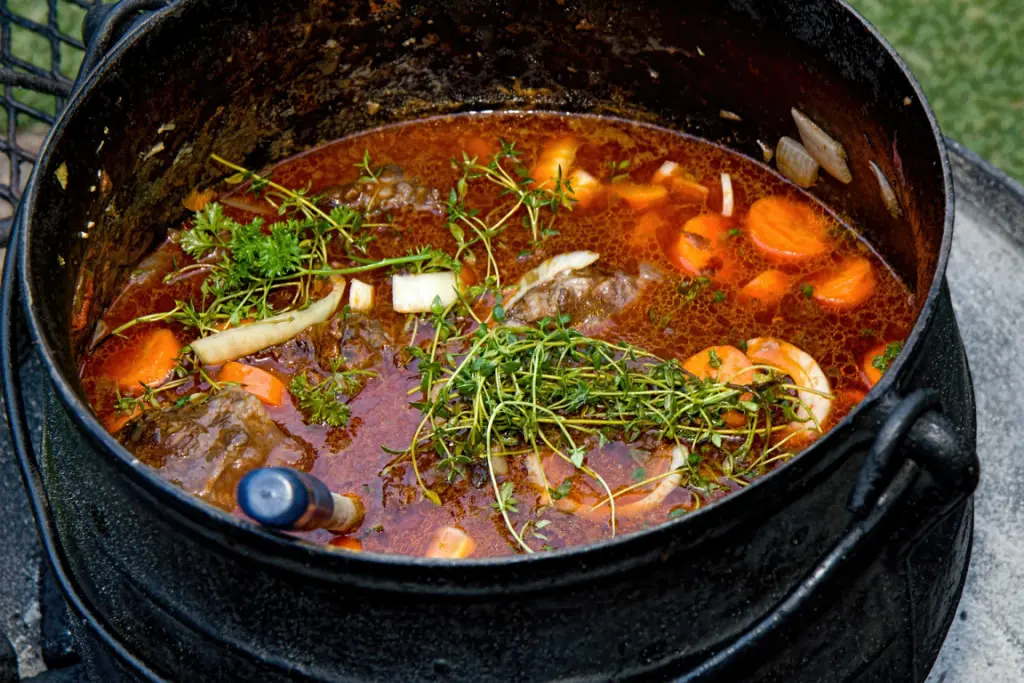
Braaivleis
Braaivleis is the Namibian equivalent of barbecue. But, unlike barbecue, hot dogs and burger patties don’t ordinarily appear on the Namibian braai menu. Instead, locals prefer richly-flavored lamb chops, boerewors (farmer’s sausage), chicken, steak, snoek (ocean fish) and pork rashers.
Much like South Africans who also have a huge braaing culture, Namibians enjoy their braai with various types of salad.
In Namibia, preparing meals outdoors is a way of life, as indoor kitchens are rare. This is not surprising given the high temperatures in the country.
Over time, the barbecue, or braai, has become a social gathering and ritual – it is considered the most important feature of Namibian cuisine.
During a braai, anything that can be bought in a supermarket is put on the grill – be it game such as zebra, ostrich or oryx; a farmer’s sausage called boerewors or even just peppers with little buns for grilling (braai brootjes).
The best accompaniment is either ice-cold Savannah Dry from South Africa or Tafel beer, which is still brewed according to German purity laws.
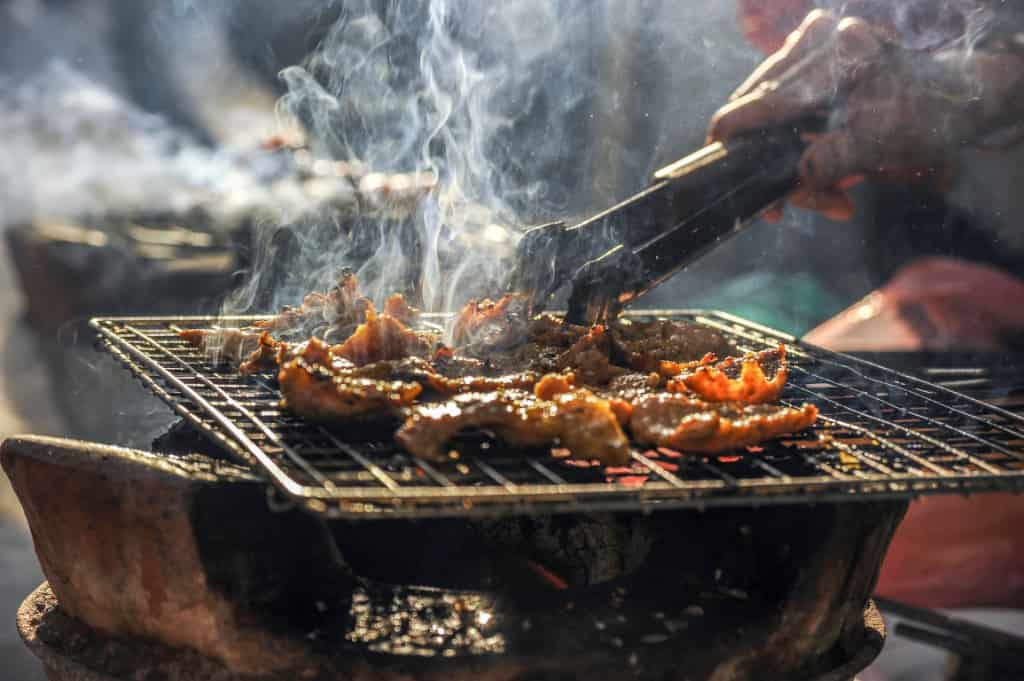
Mopane Worms
Mopane worms are caterpillars found in the northern parts of Namibia. The Oshiwambo ethnic group discovered their potential as a delicious meal and introduced them to the rest of the country.
In Namibia, the caterpillars of the emperor moth are known as omangugu and are famous for their high nutritional content of 60% protein, iron and calcium. Locals, especially in remote areas of the country, consider them an ideal supplement to their diet.
If you want to go on a culinary voyage of discovery, you should definitely try this caterpillar. In traditional markets, as well as in some restaurants, it is usually offered fried.
It may seem strange at first, but in the end it is a rewarding experience with a surprising taste sensation.
Today, many foodies relish a meal of crispy, fried mopane worms.
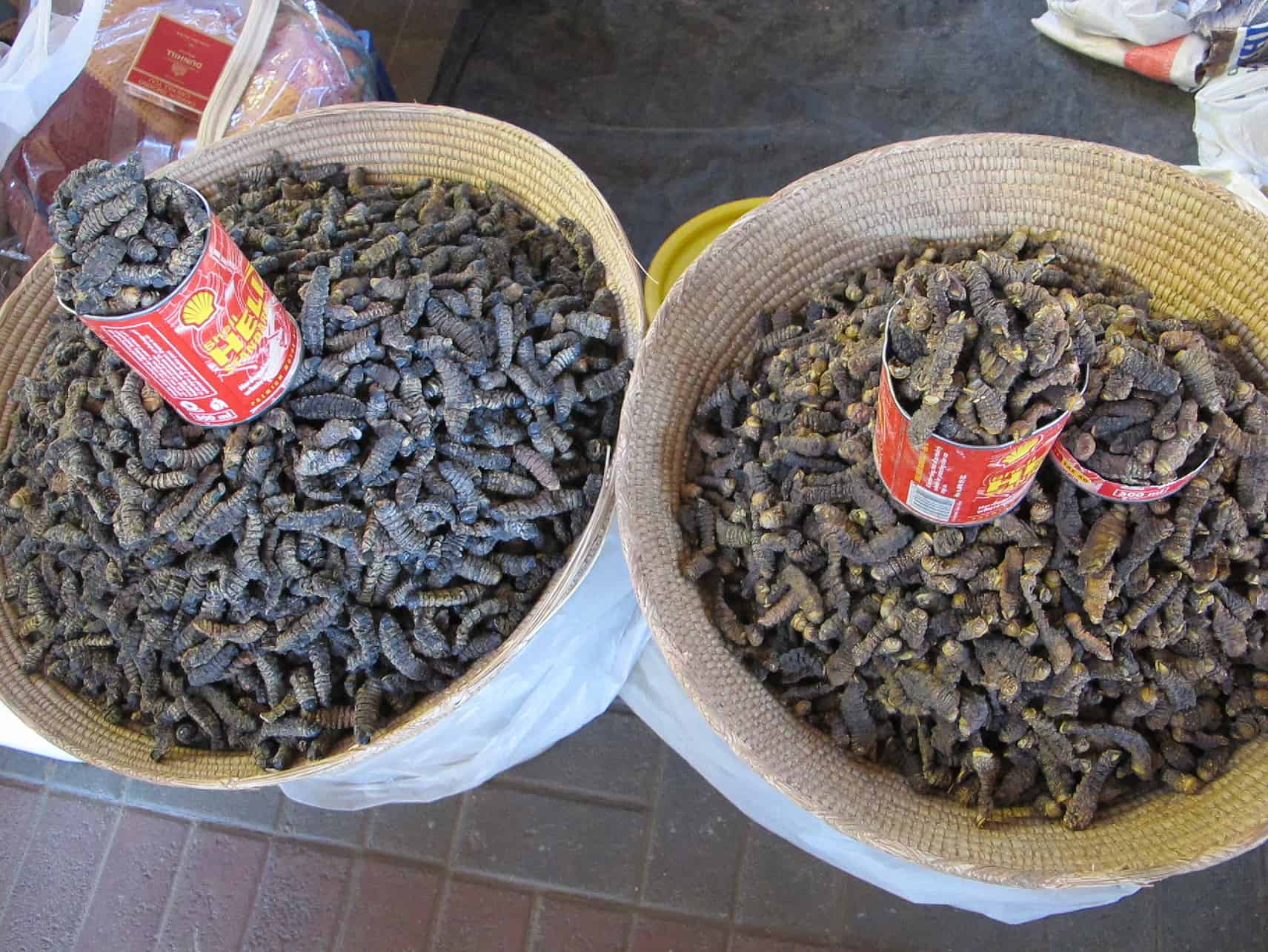
Kingklip
Be sure to add kingklip to your list of culinary highlights! Although it is not so well known yet, it will soon be a real competitor to the cod. The meat of the fish is mild and low in fat – a real treat for gourmets!
Especially on the Namibian coast, the white meat is at its best: it tastes wonderfully juicy and unbelievably delicious!
There are many ways to prepare it: Kingklip can be grilled or fried. As a whole fish or as a fillet with skin, the Kingklip is perfect for gentle cooking methods such as poaching, steaming or frying on the skin. Its tender flesh can be prepared very gently.
The South African Bearded Kingklip has an elongated body similar to that of the eel. It reaches impressive sizes of up to 1.80 meters in length and 15 kilograms in weight.
The different species of kingklip are easily distinguished by their coloration: They range from red-orange with black spots on the back – especially the South African variety, which is smaller and more spotted than other species.
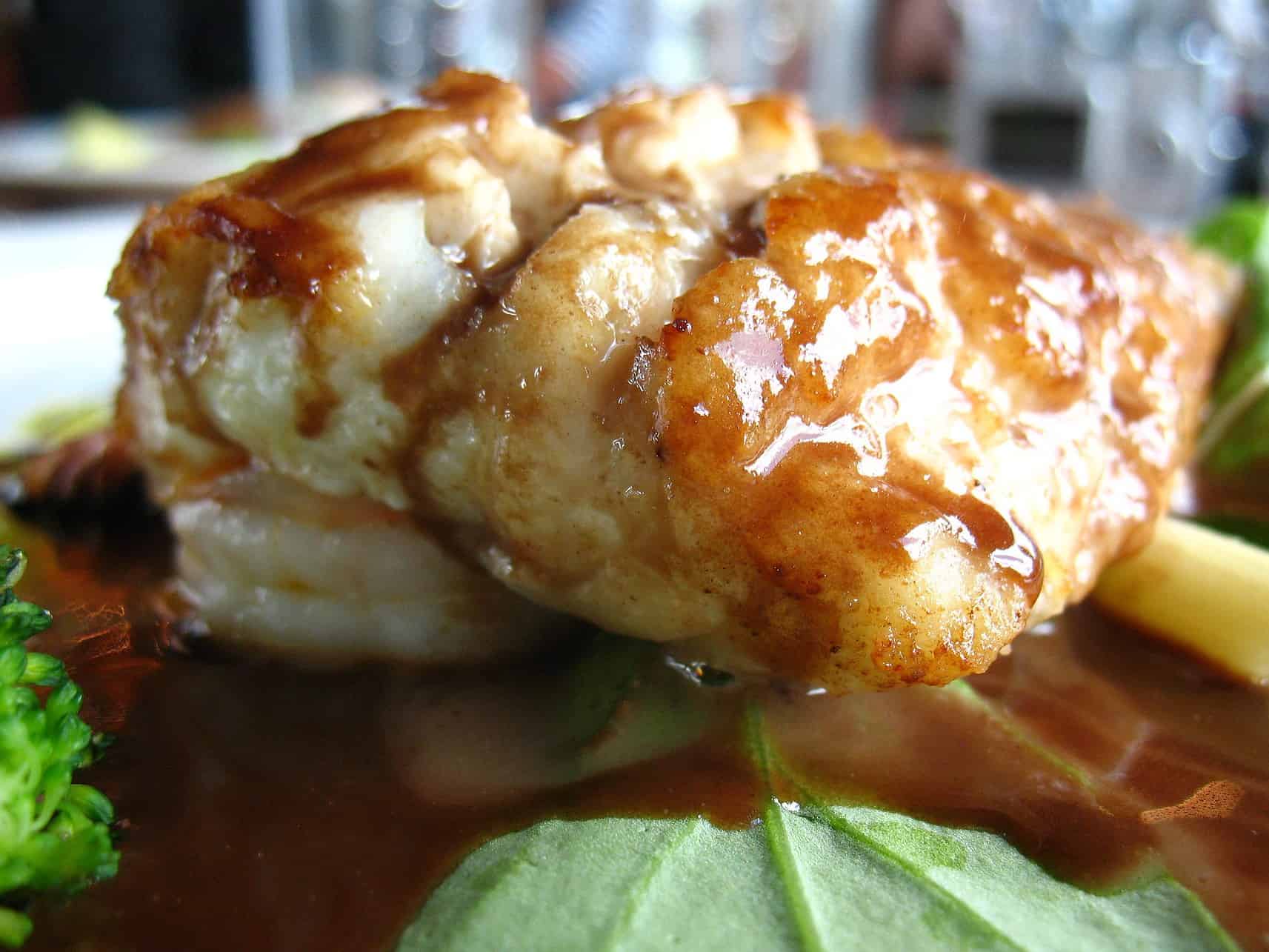
Kapana
Kapana is very popular all over the country.
Essentially a street snack, Kapana is red meat barbecued in the open-air, and sold in the country’s townships. Cooks cut the meat into small pieces and serve it with peppers, onions, chillies and sauces.
The street vendors work together in the markets and serve you freshly grilled meat of the highest quality.
They prepare a variety of cuts, often including beef, lamb or venison. It is traditionally cooked over a charcoal flame with a metal grill as the base. Once the meat is cooked to perfection, you can take a piece right off the grill and dip it in chili powder and salt – simply delicious!
Topping it off is a salsa-like sauce made from diced tomatoes, onion rings, and fiery chili peppers; seasoned with vinegar & oil for a harmonious flavor experience!
Known as a hangover cure, this specialty is also an excellent appetizer for the enjoyment of Namibian brewed beer.
Goat or Beef Tripe – Matangara
Namibians enjoy the edible offal from the ox, sheep and goat stomachs, and prepare them as curries or potjies.
Before it can be prepared, however, it must be thoroughly cleaned until it is absolutely clean.
The tripe is then slow cooked and forms an important base for a hearty stew. This is particularly popular in restaurants around the country, as well as with street vendors as a quick meal to go.
Matangara also often finds its way into the traditional potjiekos of the locals. The meat should be nice and tender – that’s when Namibians love it the most!
Tripe is a Namibian traditional food, so remember to try it if you’re after a thorough cultural experience. So if you’re interested in trying the more traditional Namibia food, this is the one to try!

Biltong
When you try biltong, you are in for a special taste experience.
Besides beef, Biltong can come from dried Kudu, Springbok, or Gemsbok meat. The preparation method involves marinating the meat for days, spicing it and, finally, hanging it to dry for two to three weeks.
The beef is cut into thin strips and seasoned with selected spices. It is then slowly air-dried until the meat has reached its characteristic consistency – 100 grams of biltong is made from 240 grams of fresh beef.
What makes this delicacy so special? For one thing, it is extremely tasty: The spicy flavors combine perfectly with the juicy, low-fat muscle meat of beef. Biltong is also a great source of nutrition: It is high in protein and iron, and low in carbohydrates, making it ideal for an athletic snack or a snack between meals!
Eating biltong is a huge part of the culture in Namibia, so be sure to give it a try.
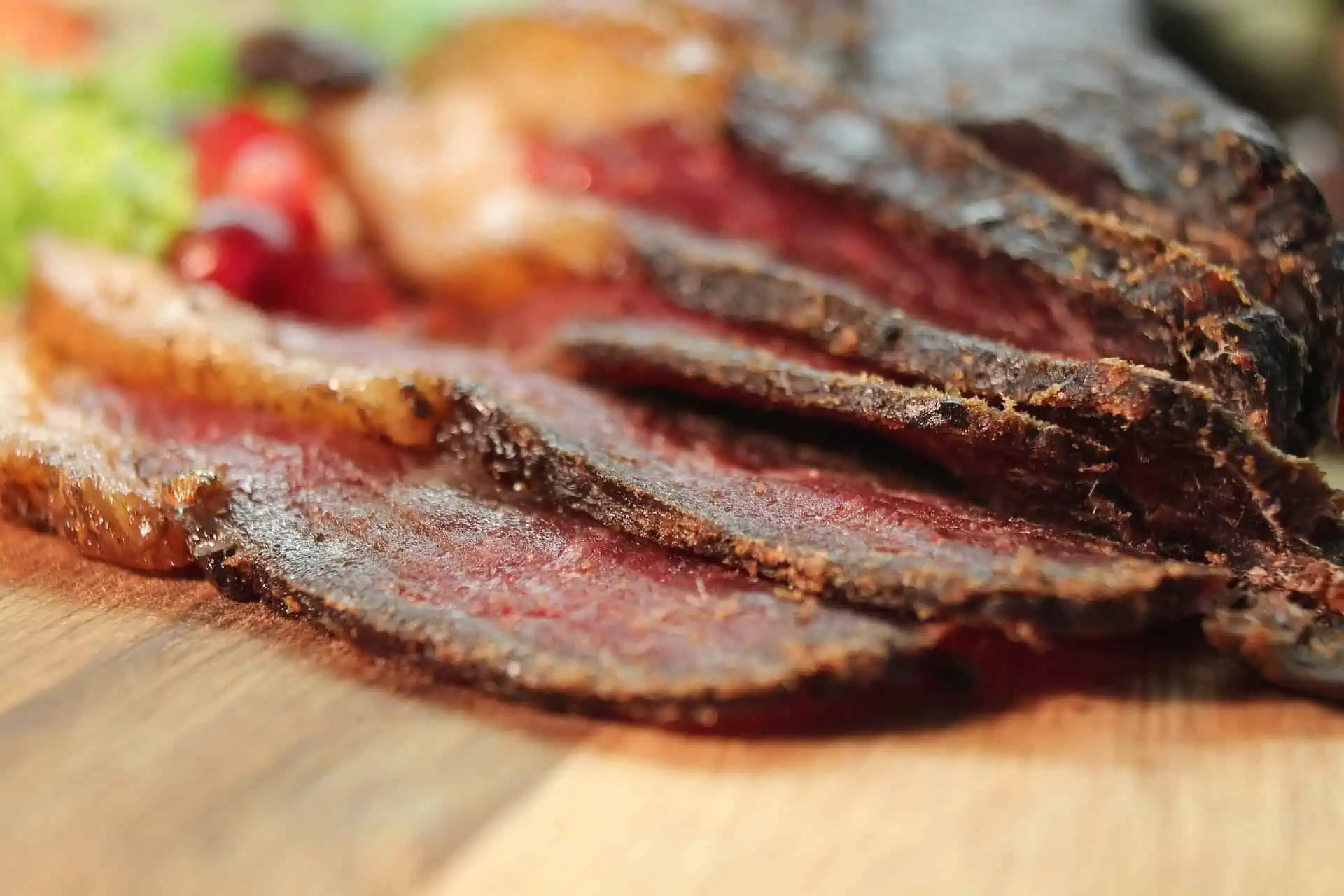
Game
Namibia has many interesting (and delicious) game options for adventurous foodies. Expect to find Kudu, Springbok, Ostrich and Crocodile on the menu.
It may seem a bit unusual to suddenly find ibex meatballs and zebra steak on the menu. But we can assure you: Each dish is highly recommended! The meat is excellent and in most cases absolutely fresh.
If you are doing a self-drive tour through Namibia, you should ask for fresh game at the campsites. Many of these places are owned by farmers with their own livestock – so you have the opportunity to enjoy really high quality meat right on the spot.
Another more unique type of Namibia food to try!
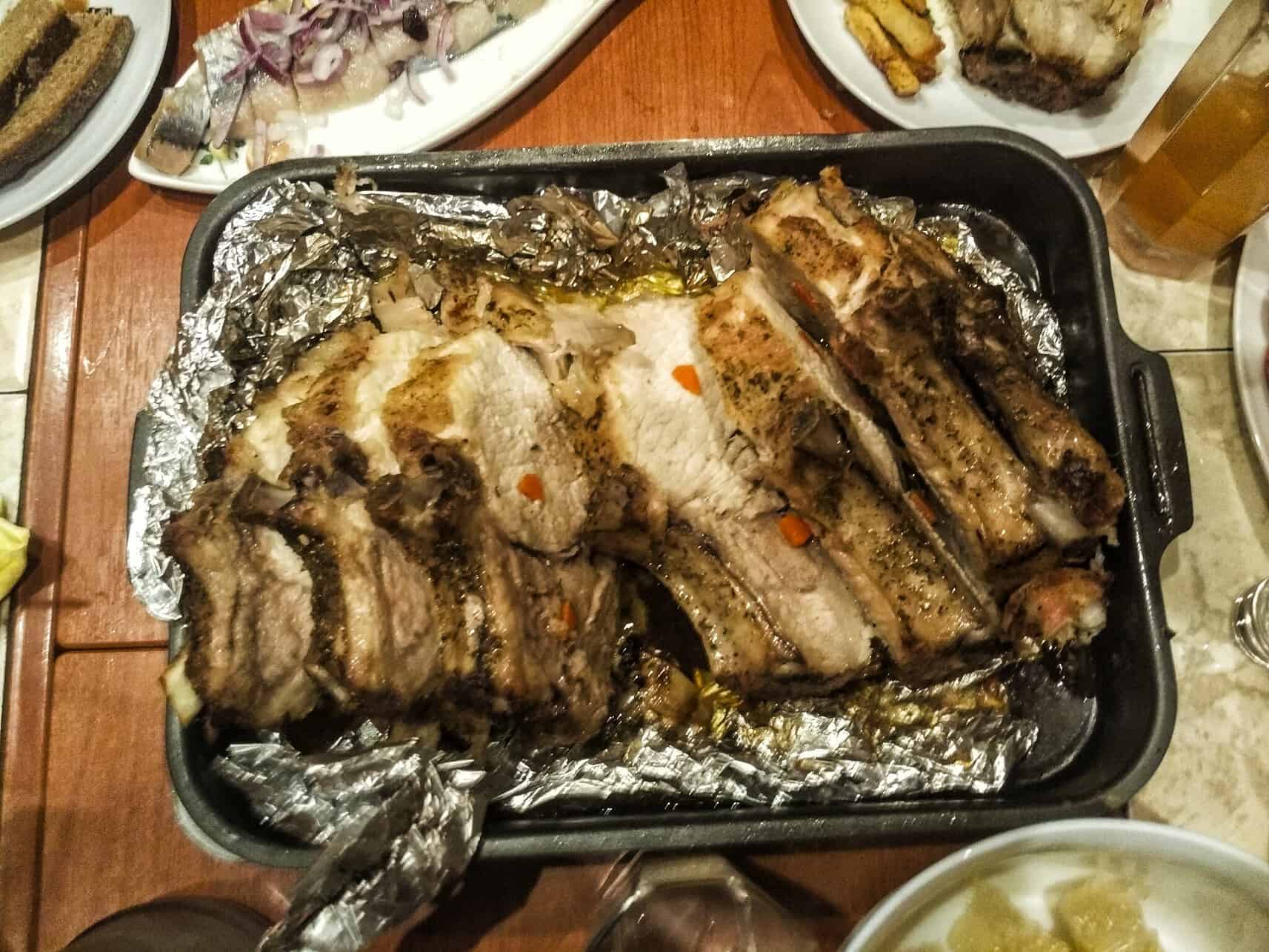
Boerewors
When talking about food in Namibia, one topic cannot be missing: Boerewors.
This South African product is also available here and can be found as a kringle in the refrigerated section. The name translates as “farmer’s sausage” and that’s exactly what it is – a sausage for barbecues with friends or family.
Interestingly, there are strict specifications for the production of this type of sausage, which have even been regulated by law since 1990.
So watch out – don’t mess with the Boerewors! If you want to enjoy it properly, it is best served with mustard at the braai – it tastes just perfect that way!
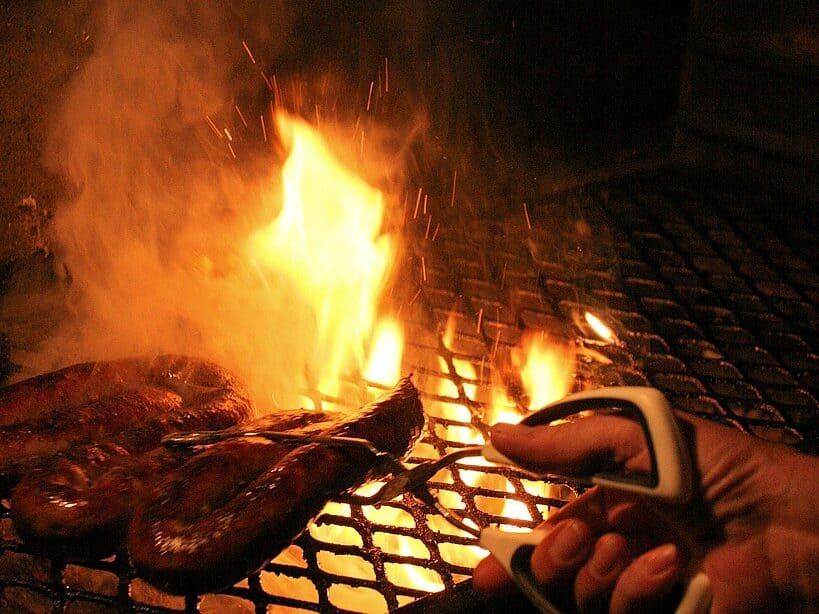
Potijekos
Try the many variations of potijekos when you don’t feel like grilled meat. Traditionally cooked in a three-legged iron pot directly over an open fire, this stew is a true taste sensation.
The ingredients for the stew vary depending on the region or the cook’s preference, but usually a variety of meats such as beef, pork or lamb are combined with vegetables. Popular vegetables include cauliflower, pumpkin, or cabbage – all fresh and healthy ingredients!
So what are you waiting for? Give this delicious alternative to grilled meat a try!
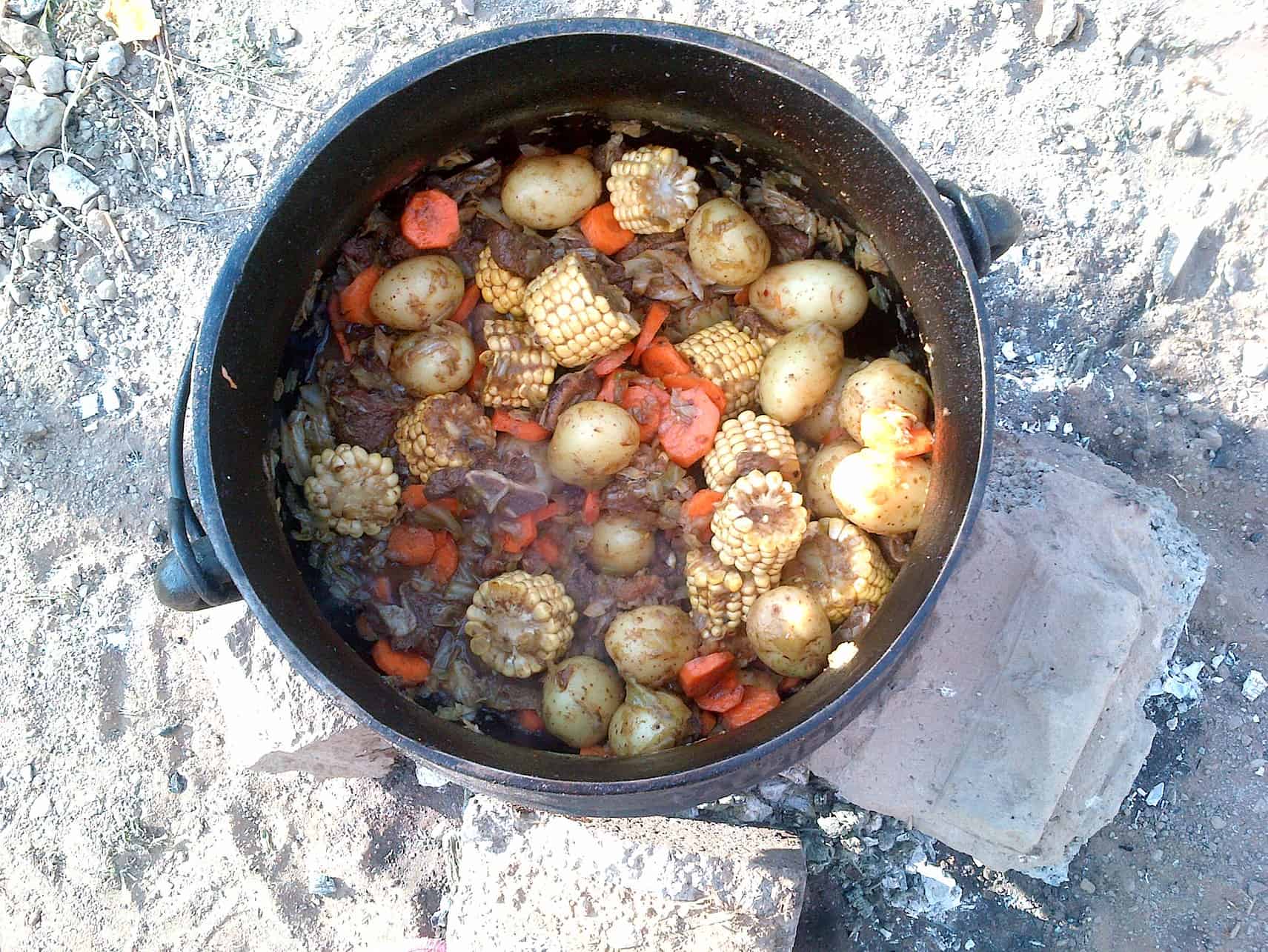
Vegetarian Miliepap
In Namibia, miliepap is a popular vegetarian maize porridge that is usually served as a side dish. However, when vegetables are added, it can also be enjoyed as a nutritious main dish.
Today, pap exists under different names in many African countries and has different ways of preparation depending on the region. Slap Pap is eaten for breakfast with milk and honey, Stywe Pap goes perfectly with braai dishes and Krummel Pap completes meat and vegetable dishes.
An important tradition when tasting Miliepap is that it is eaten exclusively with the hands.
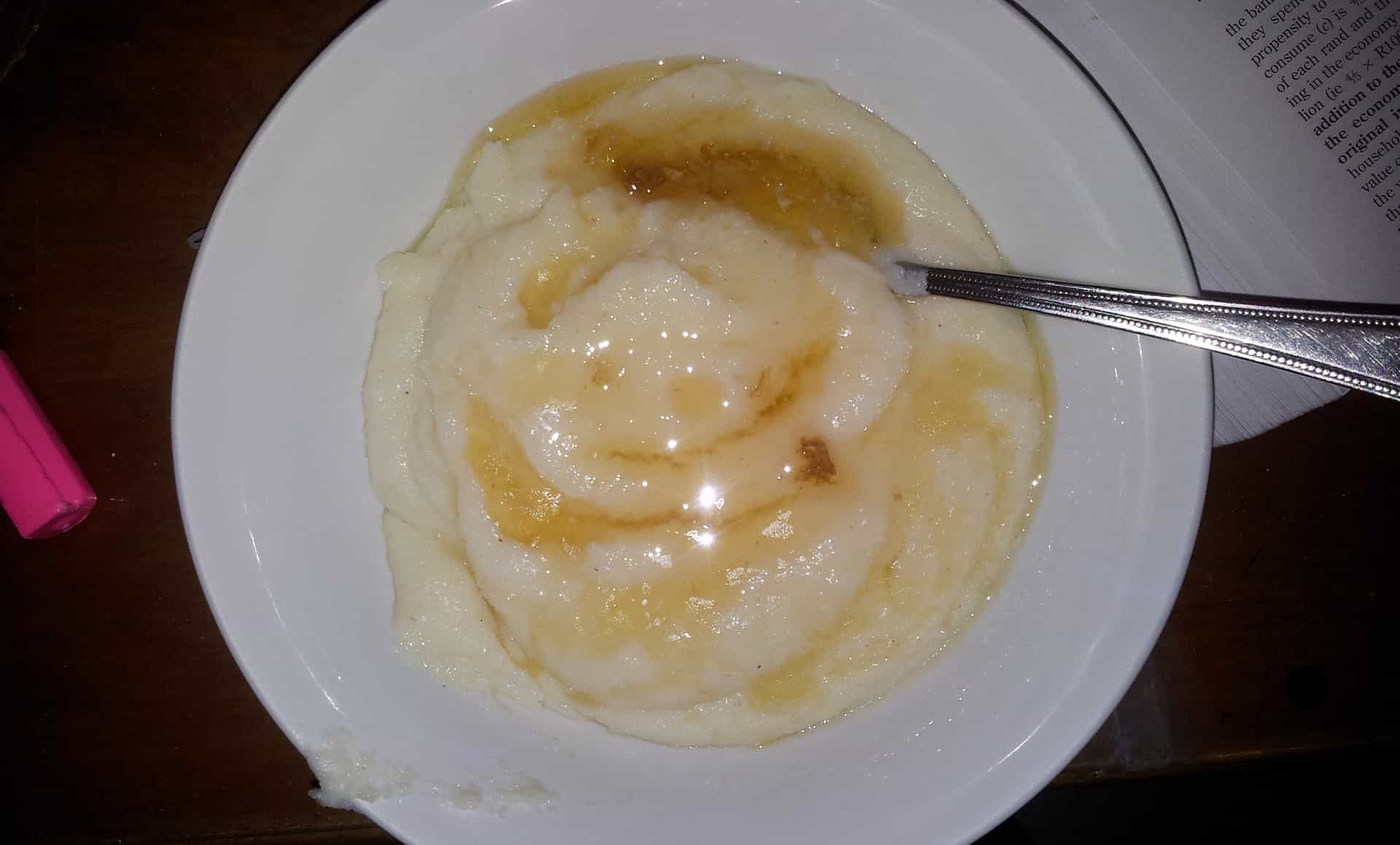
Smiley: Sheep or Goat Head
Smiley is for those who love the extraordinary.
It is usually a prepared sheep or goat head cooked with a variety of herbs and spices.
There are no parts of the head – apart from the brain – that cannot be eaten. Even the eyes are part of this delicacy! Be brave and try Smiley!
By the way, the name “smiley” comes from the fact that the head looks like it is smiling after cooking.
Fresh Bread
Braai brootjes are a treat for anyone who likes to grill herb baguettes. Namibia’s supermarkets sell small white rolls filled with homemade garlic or herb butter – a real taste explosion and perfect for the hot barbecue!
If you prefer homemade bread, look for farms in Namibia. Many family farms have their own lodges or campsites and bake their own fresh bread – which tastes heavenly with an aromatic cup of coffee in the morning!
From biltong to braaivleis and potjiekos, Namibia has so much to offer when it comes to food. In this blog post, we’ve introduced you to some of the best dishes to try while traveling in Namibia. Although meat is the main dish, there are also one or two vegetarian options to try.
So, what are you waiting for? Let the flavors and tastes of Namibia enchant you and discover a new culinary world! And don’t forget to visit our website for more tips and recommendations.












